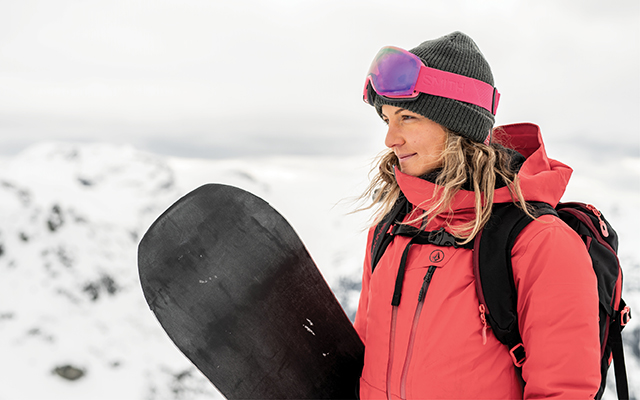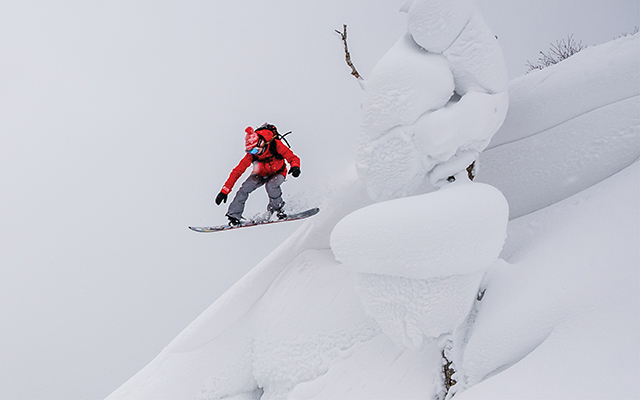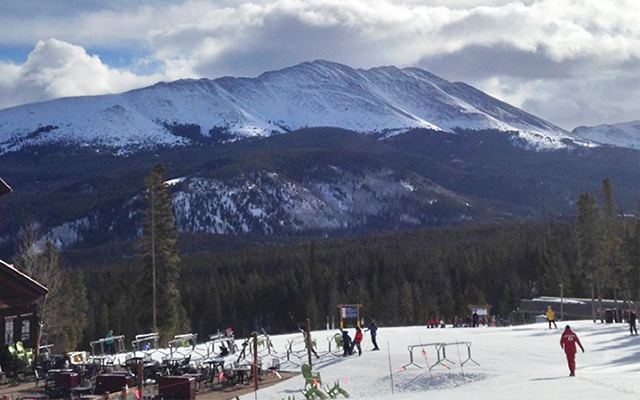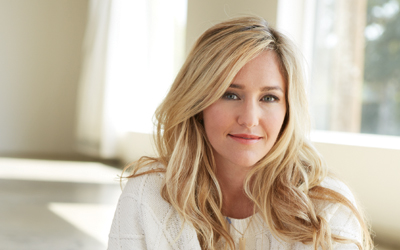Elena Hight has been breaking ground by leaving it since she began snowboarding as a 6-year-old.
“My dad was a surfer his whole life in Hawaii, and he would leave the island for a couple of months every year and go to the mountains,” she recalls. “When we relocated to Tahoe, he taught my whole family to snowboard.
“I loved snowboarding from the beginning,” she adds. “I caught on to it quickly and started competing in amateur events when I was 7 and did my first pro event when I was 13.”
In 2003 that 13-year-old became the first female snowboarder to land the technically demanding frontside 900 — a two-and-a-half-revolution aerial spin — in a competition.
She cemented her legendary status by becoming the first snowboarder to perform a double backside alley-oop rodeo (also known as a double cork) during the 2013 Winter X Games superpipe finals. Four years later, she added her seventh medal — and first gold — to the hardware she’s collected from the X Games.
Never one to play it safe, the 29-year-old two-time Olympian is ready to venture into new territory: She’s leaving freestyling for freeriding, or snowboarding in the backcountry — wilderness and forest areas inaccessible by chairlifts.
“I’ve been competing professionally for 15 years, and it’s been awesome. I love competing and the platform that it gives you to push yourself and showcase all of your hard work,” Hight explains. “But to me, putting yourself outside of your comfort zone is what life is all about.”
Abandoning a successful career may seem like a major risk, but Hight believes pushing boundaries is essential for her growth. “Humans are naturally drawn to being comfortable, but getting stuck in routines can prevent us from being creative and challenging our mind and body,” she says. “I find that seeking new adventures and new ways of learning makes me a better snowboarder and person.”
What’s Old Is New Again
Her return to the backcountry is also a homecoming of sorts. “I grew up riding everything in Tahoe. I rode the park and the pipe, I raced gates, and I did a lot of freeriding in the powder among the trees,” she recalls. “I’ve always loved that side of snowboarding.”
Her love of nature led her to dabble in the filmmaking side of snowboarding for the past several years. “I went to Alaska to work on an all-women’s film called Full Moon,” Hight says. “Being in a male-dominated sport, an all-girls film crew is not something you see very often. The movie is a cool way to show more women that they can do these amazing things just as much as guys can.”
She’s also shot an online series with Snowboarder magazine, but it was a visit to California’s stunning John Muir Wilderness that inspired the shift in her career trajectory. “I traversed the Eastern Sierra from Convict Lake near Mammoth to the wilderness just outside of Fresno with Jeremy Jones — an icon in big-mountain riding — to make the film Ode to Muir and fell in love with it.
“Being in the mountains makes me feel really alive,” Hight says. “It brings out my passion and pushes me in new ways. That excitement and challenge is enough to make me step away from something like the halfpipe that I’m already good at to take the chance on myself and this new path.”
Success on her new path involves mastering the splitboard — a snowboard that can be separated into two ski-like parts with climbing skins (strips of material that attach to the undersides of skis to provide traction) to ascend slopes and then reassembled to descend the mountain.
“It’s like having two big snowshoes on your feet that help you glide and hike up mountains that are covered with snow without falling waist deep with every step,” Hight explains. “It’s a fun way to explore the mountains in the wintertime.”
Hight hopes not only to develop new skills and conquer new challenges, but also to create documentaries that will inspire others. “The films capture what it’s like to ride in remote places that are a little advanced for the average snowboarder,” she says. “But I hope peeking into what these beautiful places are like makes people want to go beyond their perceived boundaries.”
Conscious Changes
Hight also hopes that the films will bring more attention to the beauty and wonder of the outdoors and motivate others to help save it. An ambassador for the organization Protect Our Winters (POW), Hight educates her fans on the effects of climate change. She’s lobbied congressional delegations on environmental policies and visited schools to talk to kids about how climate change influences conditions like snowpack levels.
With POW, she also works to mobilize the snow-sport community to make shifts that improve the environment. “As athletes, we live a lifestyle that’s not necessarily very eco-friendly,” Hight notes. “I fly on airplanes. I drive a car. I travel a lot. I am oftentimes in airports and using disposable things. But I think the most important thing is for people to realize that changes aren’t about being perfect — they’re about just trying your best to be aware of the choices that you’re making.
“For example, over the past few years I’ve taken a close look at the things that I can control, such as trying to use reusable water bottles and nonplastic food containers. Several companies even make silicone bags instead of plastic,” Hight says. “On a larger scale, I offset my carbon footprint with carbon-tax repayments and have become active in fighting for government policies that positively affect our environment. Using your voice by voting for climate supporters is the single most important thing we as individuals can do to help protect our natural resources and combat climate change.
“As I look to make this transition into the backcountry, I really want to be conscious about all of the other things that are really important to me in my life, and one of them is the environment,” she says. “Accessing mountains on foot with my splitboard — instead of via helicopters or snowmobiles — goes hand-in-hand with that.
“Human-powered adventure has a smaller carbon footprint,” she adds. “It also really connects you to nature, so you can absorb the entire experience.
“I think one of the reasons that many people aren’t worried about climate change is because humans are too often disconnected from nature,” she says. “As soon as you set foot into nature and create a relationship with it, you realize how much it gives to you — and that’s when you want to do your part to protect it.”




This Post Has 0 Comments